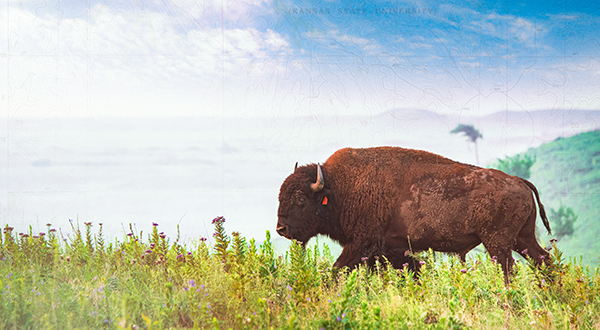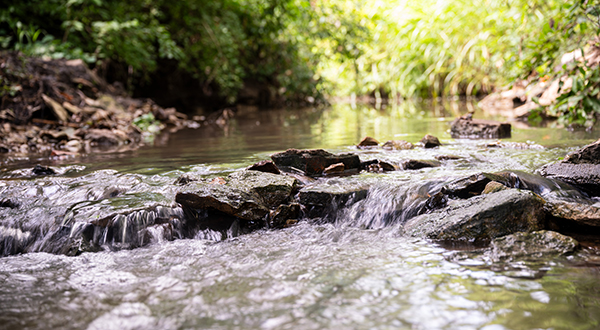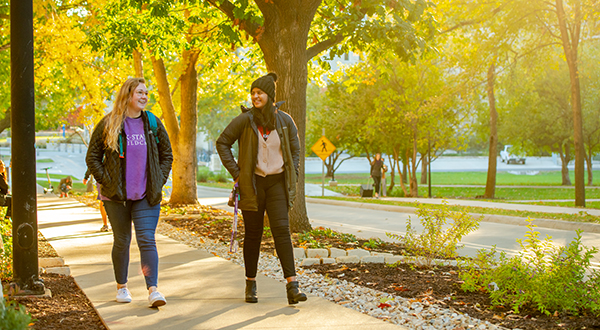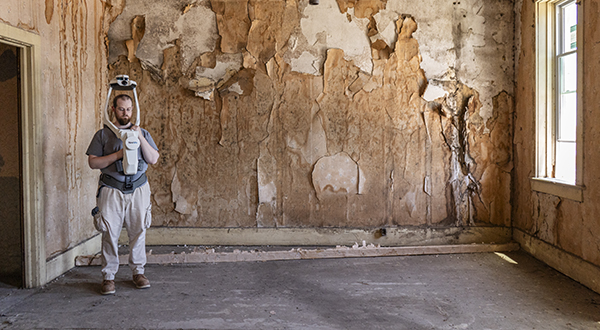
Seek magazine
Seek is Kansas State University’s flagship research magazine and invites readers to “See” “K”-State’s research, scholarly and creative activities, and discoveries.
From the vice president for research
I am excited to introduce the Fall 2024 issue of Kansas State University’s award-winning research magazine, Seek. We take immense pride in the groundbreaking research and scholarly work accomplished by our faculty at K-State, and we are thrilled to share these stories with you in this issue.
Our cover story tackles one of the most pressing challenges facing Kansas and the world — water. K-State researchers are at the forefront of this global issue. Through both individual projects and the newly established Kansas Water Institute, they are breaking down disciplinary barriers to pioneer innovative solutions for today’s water problems.
Our second feature highlights a symbol near and dear to Kansans: the bison. Also known as the American buffalo, the bison is far more than just a historical icon. K-State researchers are continuously uncovering new insights into the profound impact these majestic grazers have on our ecosystems, both locally and beyond.
The third feature focuses on one of K-State’s greatest research strengths: wheat. Our geneticists are working tirelessly to develop new wheat varieties with improved traits, including reducing adverse gluten reactions. Additionally, our milling science researchers are creating new products to meet evolving consumer demands and expand market opportunities. Meanwhile, pet food scientists are advancing research in animal nutrition, offering better options in this rapidly growing sector.
Finally, at the K-State Veterinary Diagnostic Laboratory, our researchers are the first line of defense against devastating animal diseases. Through large-scale disease testing, published maps, and reports, they ensure the health of animals, both large and small.
As always, this issue also shines a spotlight on the outstanding work being done by our graduate and undergraduate students, university distinguished professors and other faculty members. We are also proud to feature ongoing engagement initiatives led by K-State.
I hope you enjoy this issue, learn more about the groundbreaking work happening at K-State, and see how it is making an impact both in Kansas and around the world.
Hans Coetzee, Ph.D.
Interim Vice President for Research
Big bluestem, bigger dreams
K-State's 86th Goldwater Scholar studies important North American grass

Needle in a protein haystack
Graduate student investigates a cause of cancer
Researchers estimate there are tens of thousands of different proteins in the human body. Determining how and which of these molecules trigger physiological disfunction may seem like searching for a needle in a protein-packed haystack, but doctoral candidate Wei Wu is up for the challenge.

Mathematical organs
Machine learning as a drug trial replacement
Davood Pourkargar, assistant professor in the Tim Taylor Department of Chemical Engineering, is using an NSF grant to develop a physics-informed computational framework to predict disease progression and drug delivery dynamics more precisely.

Entomological excellence
University distinguished professor is world-renowned expert in the molecular physiology of arthropods
Saving honeybees and solving the mystery behind red meat allergies are two of the world’s most perplexing insect-related challenges. Yoonseong Park, university distinguished professor of entomology, is working on both.






